Punctuation (puntuación in Spanish) may seem the same the world over. Certainly, European languages all use similar punctuation marks. Everyone’s familiar with full stops, commas, colons, quotation marks, hyphens and so on. And everyone studies the basics of punctuation at school, whatever their native language.
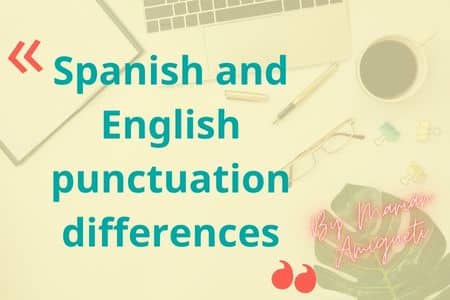
Much of my work time is dedicated to revising translations from English into Spanish. It’s an activity I normally love to do. Especially because of everything I learn through reading and correcting. I thought the Spanish-to-English translators who read this blog would find a post from the reverse perspective useful. I hope it’ll help you with your written Spanish, too!
DISCLOSURE: We sometimes review or link to products and services we think you might find helpful. Wherever possible we use referral links. This means if you click one of the links and make a purchase, we may receive a small commission or other compensation.
Do different languages have different punctuation?
Although there are many punctuation marks common to most languages, there are some that are used in one language or not another, or the same punctuation mark used in a different way. For instance, Spanish and English have similar punctuation marks, but use some of them differently.
What are the punctuation marks in Spanish?
Period, full stop, full point = punto
Comma = coma
Colon = dos puntos
Semicolon = punto y coma
Ellipsis = puntos suspensivos
Question mark = signo de interrogación
Exclamation mark = signo de exclamación
Hyphen = guión
En dash = semirraya, guión medio, raya menor
Em dash = raya
Parentheses (round brackets) = paréntesis
Quotation marks = comillas inglesas
Angle quotes = comillas españoles
Get a certificate in punctuation!
- Learn punctuation fast
- Get confident
- Build up your CV to impress clients
Why do translators make punctuation mistakes?
As I see it, there are two main reasons why translators make punctuation mistakes.
1. Tendency to imitate the source-text structure.
2. Tendency to use commas to reflect the pauses you make when speaking.
Imitating the source-text structure
As Gwenydd explains in her article about Favourite Mistakes by Translators on The Translator’s Studio Translation Courses, translators often get hypnotised by the source text. This is a problem because Spanish and English punctuation rules are sometimes different.
What we think: If you need help with confusing punctuation marks, this book has you covered.
Does Spanish use the same punctuation as English?
Punctuation use in Spanish and English differs. When you translate, it is easy to reproduce an identical structure to that of the original text. This also happens to me, I must confess.
Particularly when you work with CAT Tools, it’s so easy to simply copy source to target, keeping the same structure.
English hyphen vs Spanish colon or comma
I know it’s very tempting to translate, for instance, the English hyphen with a hyphen. Even though it would be equivalent to a colon, or just a comma, in Spanish.
For instance: Literature – An Introduction to Contemporary Poetry. Translated: «Literatura – Una introducción a la poesía contemporánea» [sic], instead of replacing the hyphen with a colon.

What about capitalisation?
Another related error is to keep the English capitalisation, by using the colon followed by the text on the same line. To use our example, «Literatura: Una Introducción a la poesía contemporánea» [sic], the correct translation would be: «Literatura: una introducción a la poesía contemporánea».
If you want more information about capitalisation in English, have a look at “When Does North Need a Capital Letter?” and “Should You Capitalise Units of Measurement Named After People?“
The correct option in Spanish for written publications is angular quotation marks.
Non-equivalence with comma use
Other times it happens that a fragment of a sentence when adapting it to Spanish should go between commas because it’s an explanatory adjunct. E.g. “occasionally pausing to look fabulous”. Translated as «y se detienen de vez en cuando para verse fabulosos» [sic]. This would be correctly rendered: «y se detienen, de vez en cuando, para verse fabuloso».
Comma in place of colon in email openings
This happens when you translate “Dear colleagues,” as «Estimados compañeros,» [sic]. In Spanish the right use is «Estimados compañeros:».
Comma omission and addition
Another common mistake is to omit the obligatory comma in Spanish in front of adverse subordinates such as pero and aunque. E.g. “I know you don’t want to come, but you should,” translated: «Sé que no quieres venir pero deberías» [sic]. The correct translation would be: «Sé que no quieres venir, pero deberías».
Here, I’d like to add an important note: there is no comma before a question clause with pero, as in “But what’s it about?”: «Pero, ¿de qué se trata? [sic]». The right use is: «Pero ¿de qué se trata?».
Commas and verbs in Spanish
It’s also wrong to add a comma between the verb and its indispensable complements (unless they go before the verb). E.g. “I called you several times yesterday in the morning”. Translated as, «Te llamé varias veces, ayer por la mañana [sic]».
In Spanish, unlike English, it’s incorrect to add a comma before the conjunction and in a list of elements. E.g. in American English, “They bought us all the items we asked for: pens, pencils, erasers, and markers.” Translated: «Nos compraron todos los recados que pedimos: bolígrafos, lápices, gomas, y rotuladores.» [sic].
Commas and decimal points with numbers
Remember that the use of commas and decimal points with numbers is completely different in Spanish and English. E.g. 1.5 in English, would be 1,5 in Spanish. 2,827,259 in English, would be 2.827.259 in Spanish. You wouldn’t believe how many documents I’ve corrected from English where all the figures were wrongly punctuated in Spanish. This meant hours and hours of changes.
When you translate, it is easy to reproduce an identical structure to that of the original text.
Quotation marks
English uses straight double quotation marks: “text”. But the correct option in Spanish for written publications is angular quotation marks: «text».
Moreover, in full sentences that include a quote, English puts the full stop in side the quotation marks. But correct Spanish use places the full stop after the closing quotation mark. E.g. “I love your app, but I’d prefer it to have a free trial period.” Translated: «Me encanta vuestra aplicación, pero preferiría que tuviera un período de prueba gratuito.» [sic]. The correct use would be «Me encanta vuestra aplicación, pero preferiría que tuviera un período de prueba gratuito».

Using commas to reflect the pauses you make when speaking
This includes the error of putting a comma between subject and verb. It’s more typical of long sentences. But it also happens in short ones. E.g. “Your new profile, I love it”, translated: «Tu nuevo perfil, me encanta» [sic]. The correct translation is: «Tu nuevo perfil me encanta».
Alternatively, sometimes we add incorrect commas between words we repeat for emphasis. E.g. “This is the very, very good lawyer I told you about”, translated: «Este es el abogado tan, tan bueno del que te hablé» [sic]. The correction translation is: «Este es el abogado tan tan bueno del que te hablé».
In Spanish, you shouldn’t put a comma between the elements of a comparison. E.g. “Both the aperitif and dinner were luxurious.” Translated: “Tanto el aperitivo, como la cena fueron de lujo” [sic].
How is the punctuation for questions and exclamations different between Spanish and English?
The big difference is the way Spanish uses an inverted question mark or exclamation mark at the beginning, as well as at the end, like in English. Spanish uses these two punctuation marks to bookend the question or exclamation. In English this is less necessary for questions as the word order and structure makes it clear that a question is coming.
Become a punctuation pro!
Want to master English punctuation? Get on the Punctuation Pro course right now!
You may also like these articles:
Best Spanish-English dictionaries
If you’d like to contact the author of this article, Marián Amigueti, visit her website.


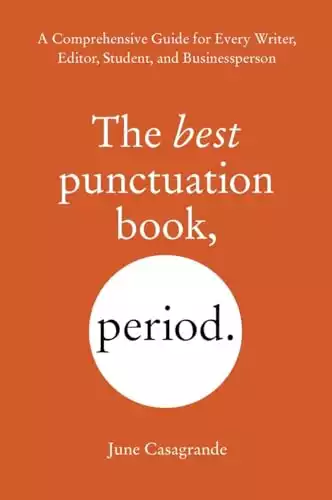
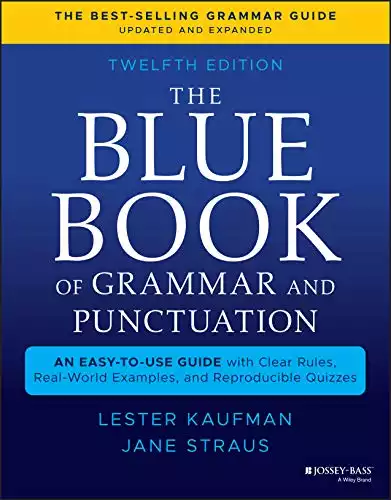

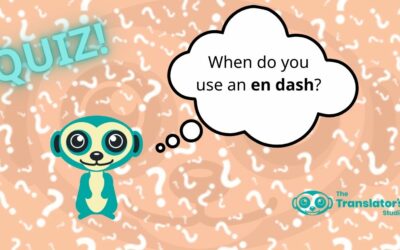
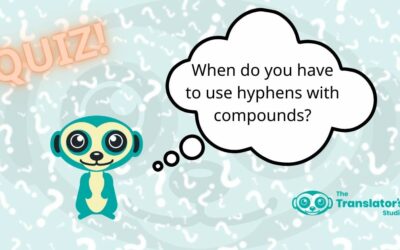
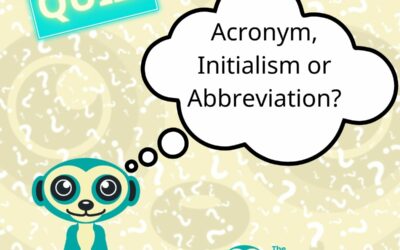
Hola, Marián. Me gustó mucho tu artículo y quisiera aportar algo con respecto al uso del punto y la coma.
En la Ortografía que publicó la Real Academia Española en 2010, se recomienda usar el espacio, y no el punto, para separar las unidades de mil. Además, se recomienda usar el punto, y no la coma, para los decimales, «con el fin de promover un proceso tendente hacia la unificación». De todas maneras, se aclara que tanto el punto como la coma son opciones válidas para los decimales.
Yo no cambiaría los puntos por comas en los decimales, salvo que sea necesario según las instrucciones del cliente. Y si se decide usar el punto para los decimales, definitivamente habrá que usar el espacio para las unidades de mil, a fin de evitar confusiones.
Hola, Priscila. Muchísimas gracias por tu aportación.
Eso es. Estamos al tanto de la norma. Lo que pasa es que en este artículo hemos querido simplificar el uso en las cifras.
Lo que indicas es clave. Qué necesita el cliente. Mi consejo es consultar primero las instrucciones, el libro de estilo del cliente, editor o nuestro intermediario sobre esto. Sugerir y recomendar la norma si no se sigue. Pero siempre será él quien tenga la última palabra.
Por tanto, dependerá de nuestro cliente la opción final.
Lo que no podemos como traductores es limitarnos a copiar la puntuación del original sin ninguna justificación ni criterio. Con esto quería insistir en el artículo y espero haberos ayudado.
Translation into English:
Hello Priscila! Thanks a lot for your contribution.
Yes, that’s right. We are aware of the rule. The thing is that in this post we wanted to simplify things to just the use of punctuation in numbers.
You make a key point: what the client needs. My tip is to start by checking instructions, the client’s/editor’s/intermediary’s style guide. Then we can suggest or recommend following RAE rules if they aren’t being followed. However, the client will always have the last word.
So, the final choice would depend on the client.
As translators, we cannot simply imitate the punctuation of the original text with no criteria or justification. I say this to underline the point made in the article. I hope that helps.
Thanks very much! I don’t know Spanish, but in the translation department where I work, we translate source documents into a number of languages, and then do a basic comparison between them, such as making sure that the numbers are correct and that all the translations use the same basic formatting. So this post helps me understand the differences I see between the translation into Spanish and those of other languages.
Thank YOU, Shalom! I am happy to hear that this post helps you in your daily work. I am grateful that you have shared your comment with us.